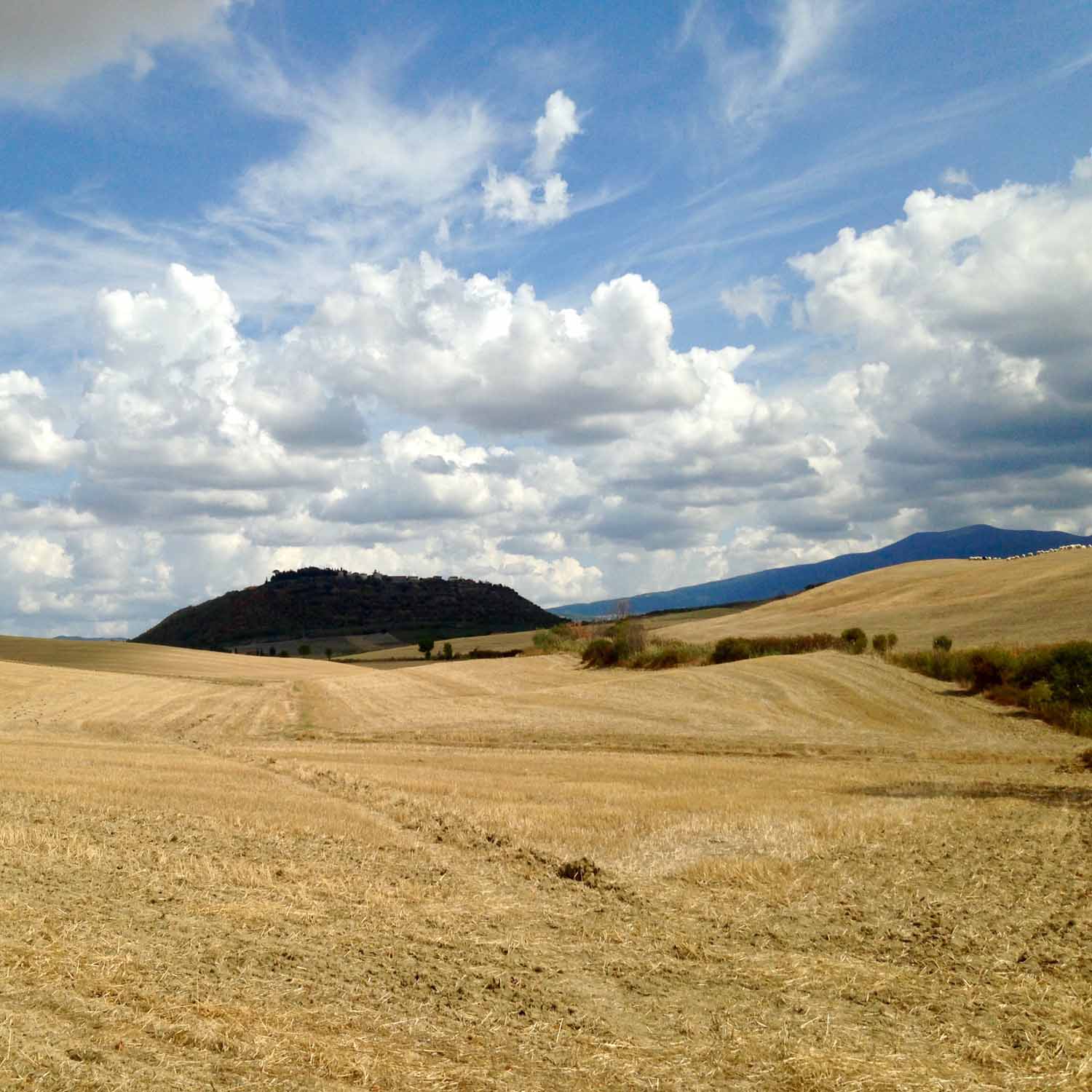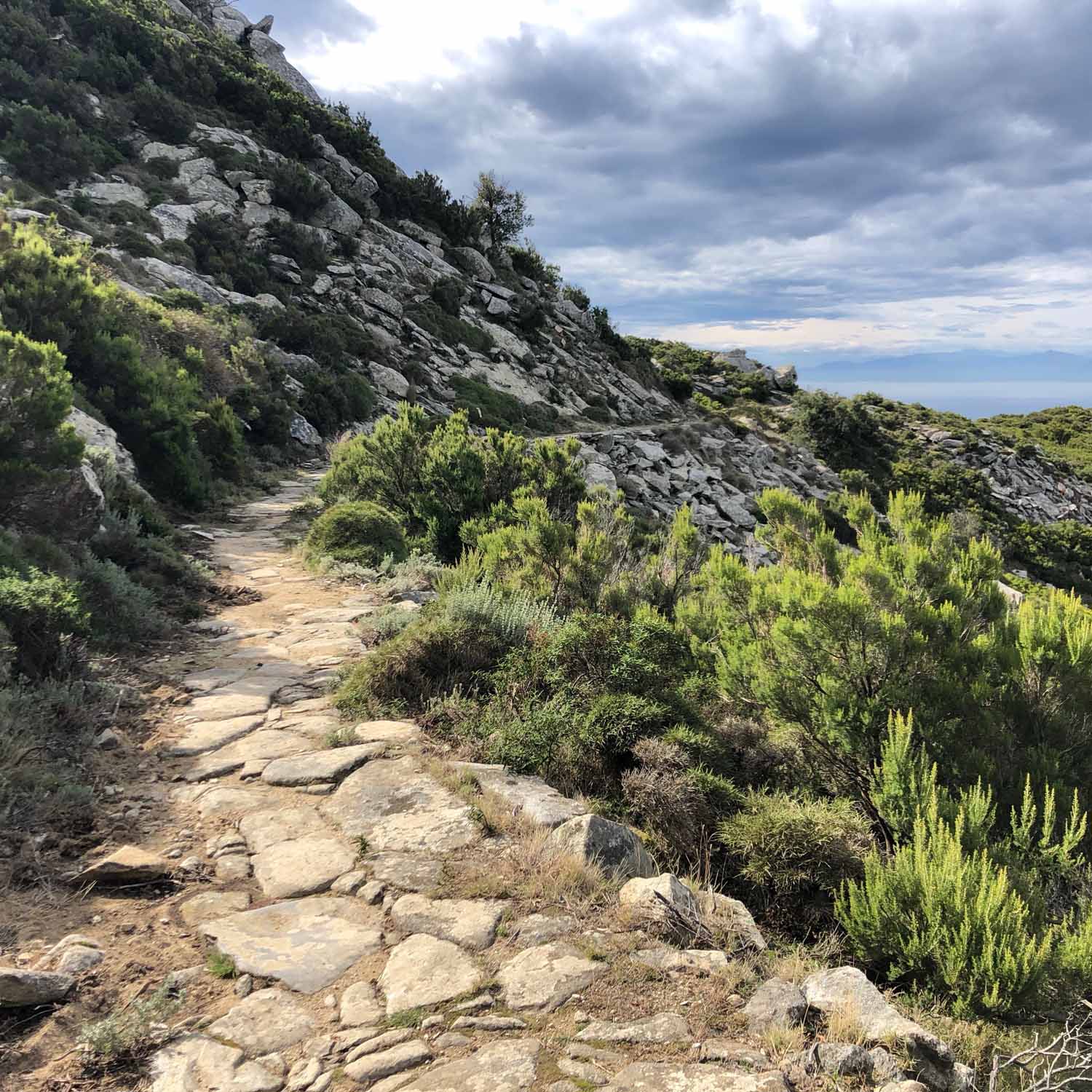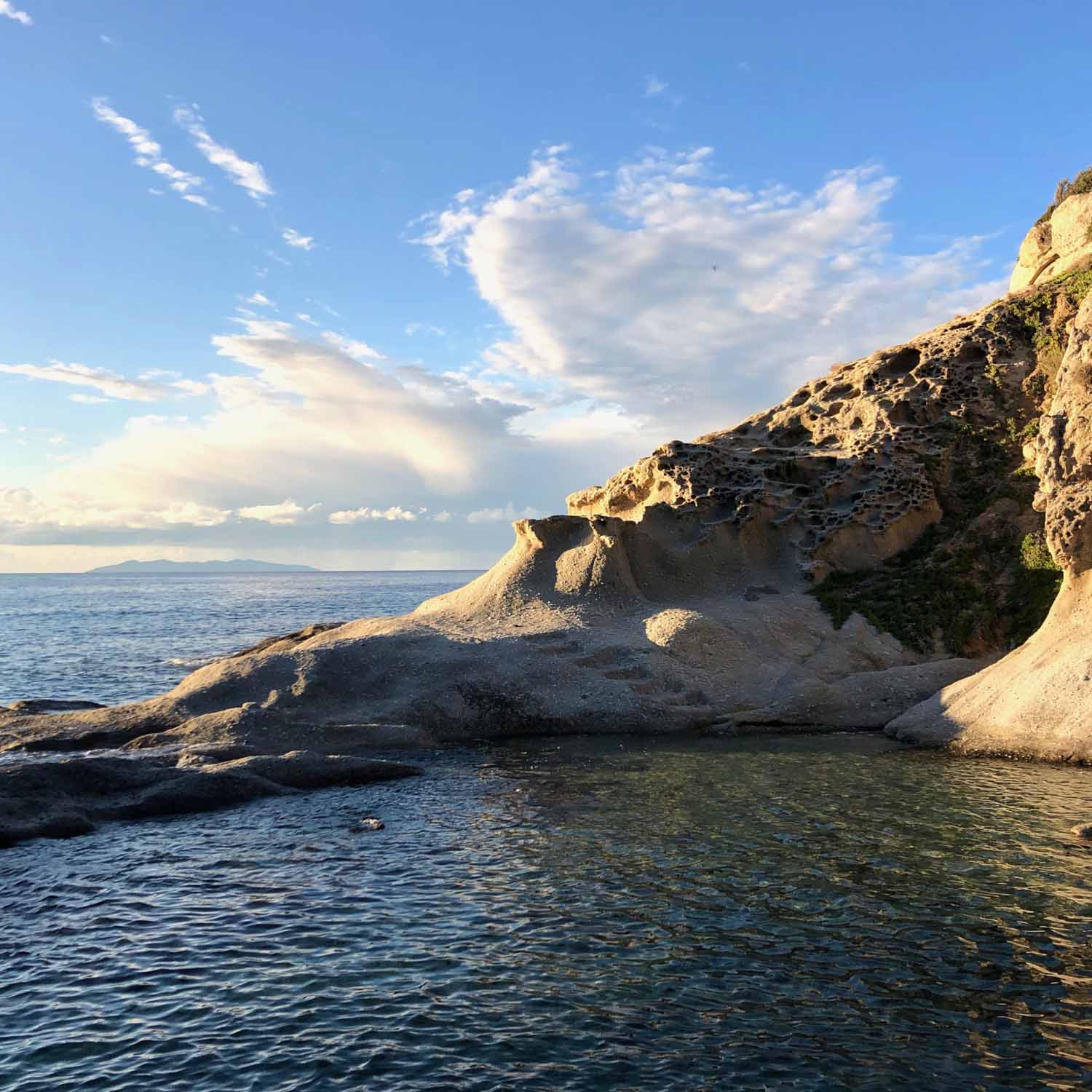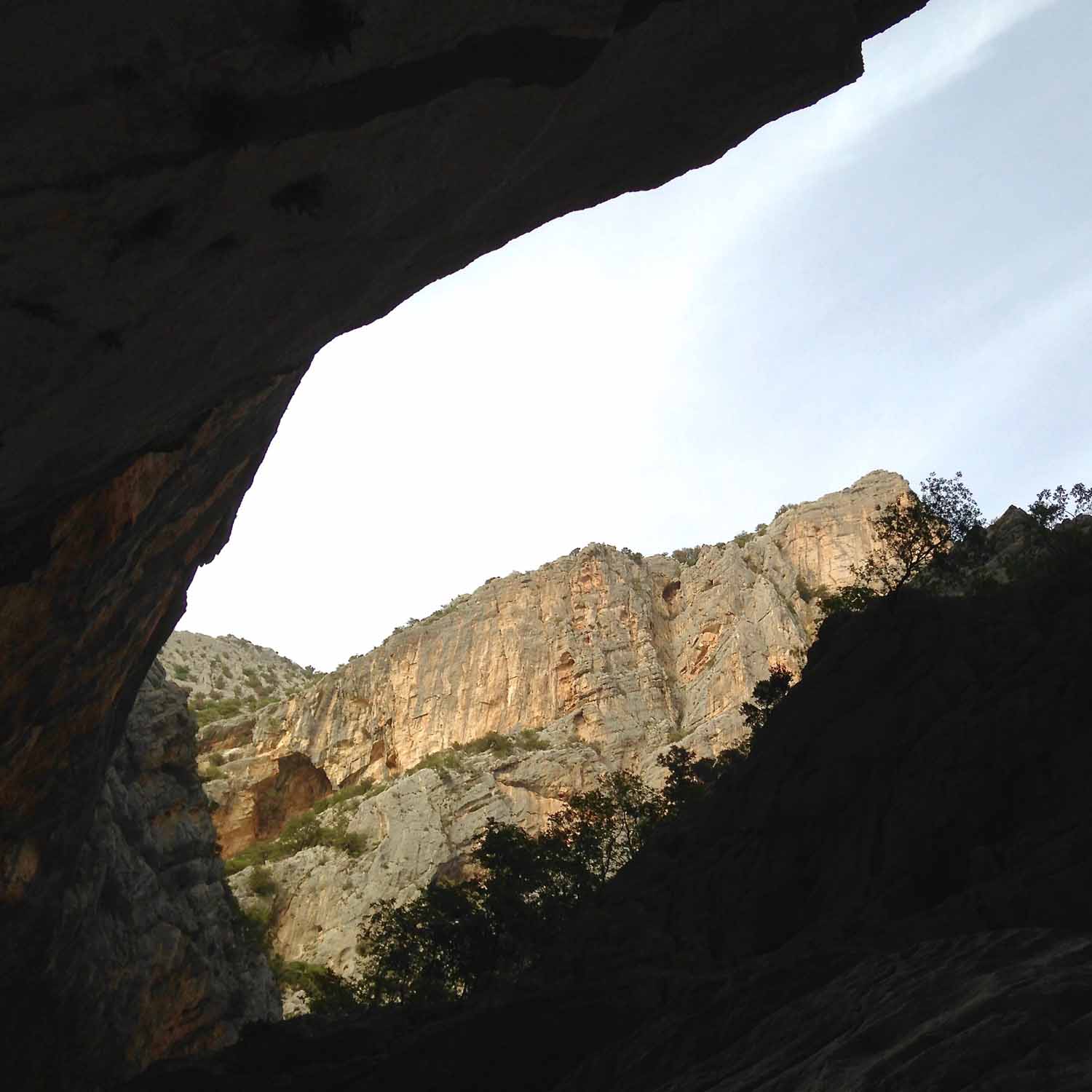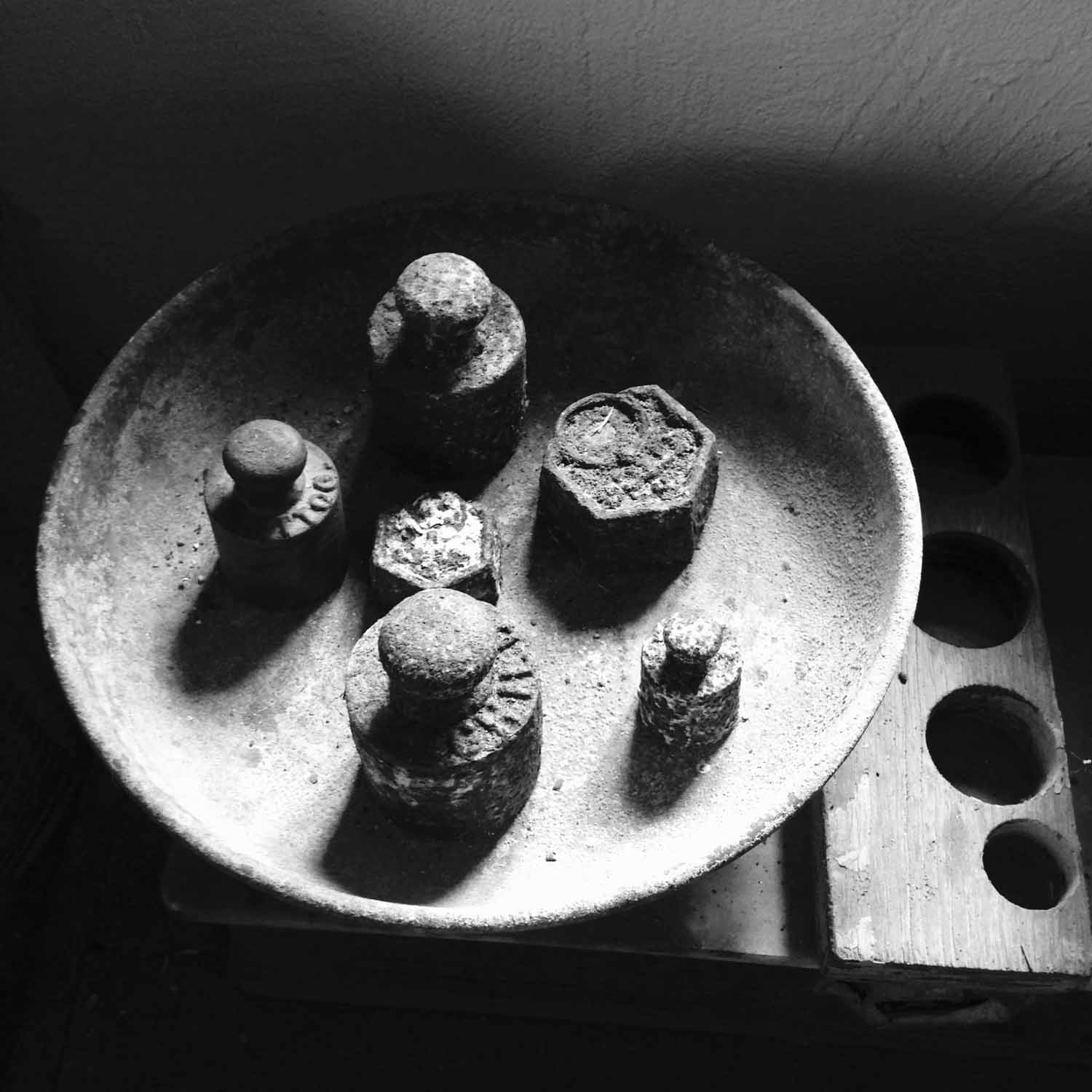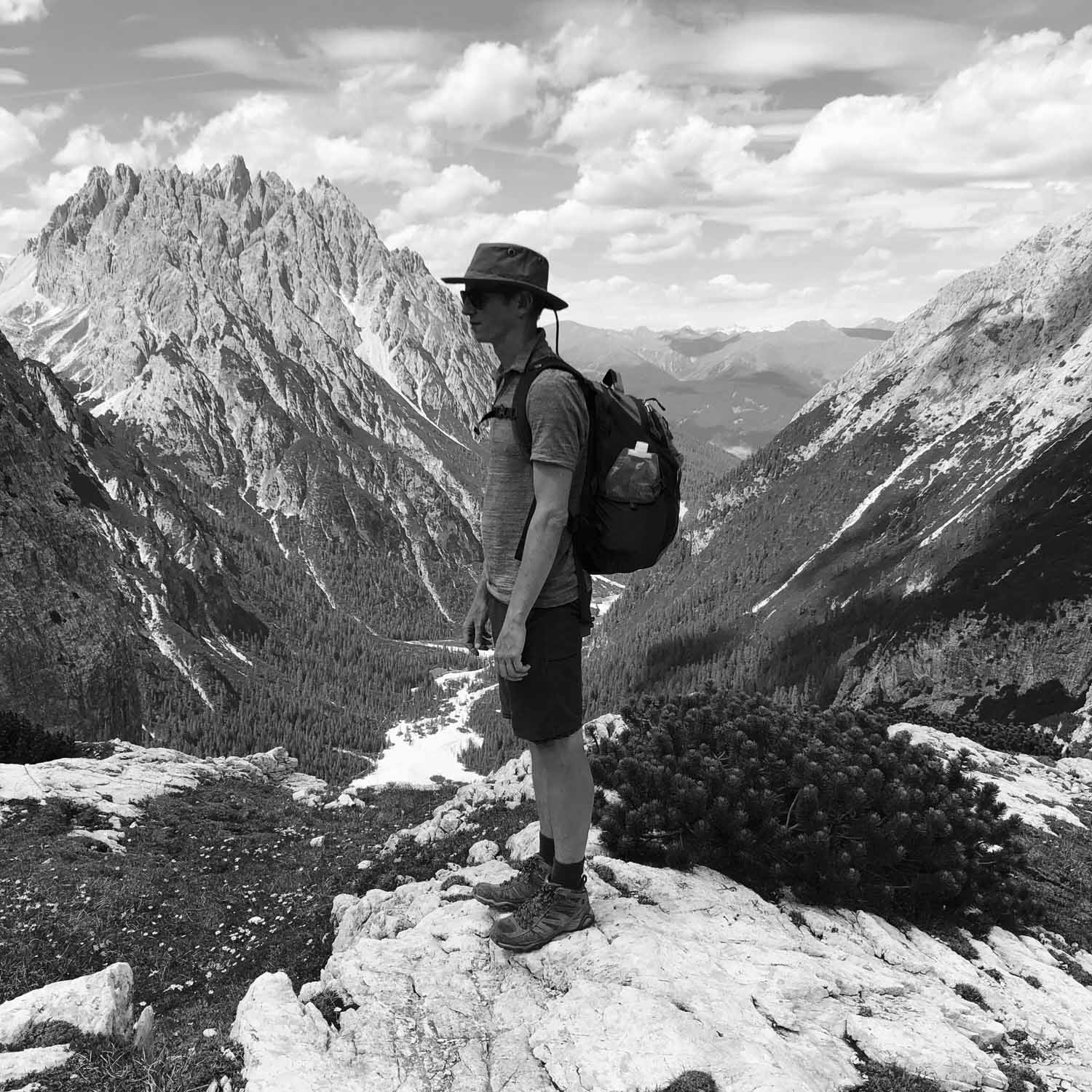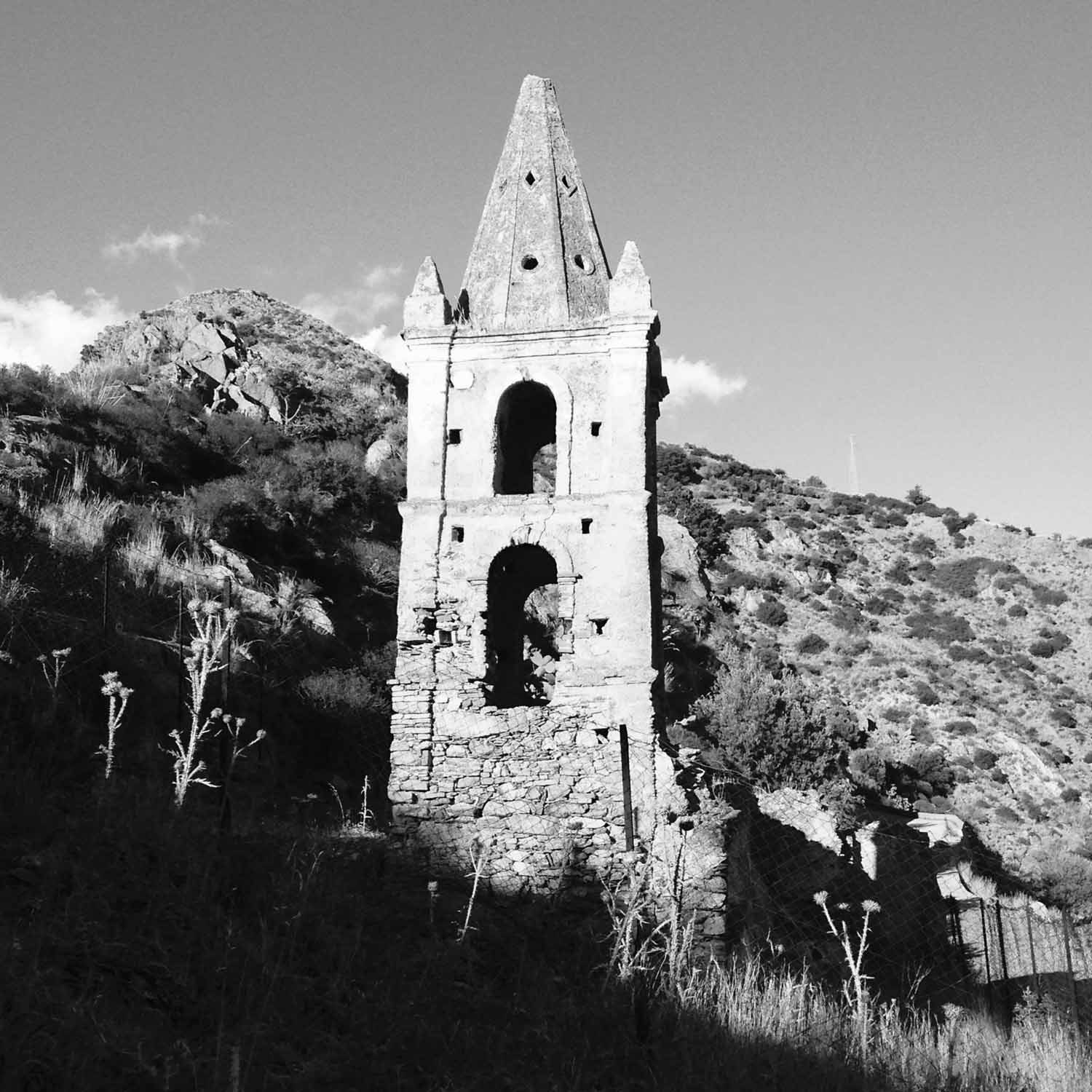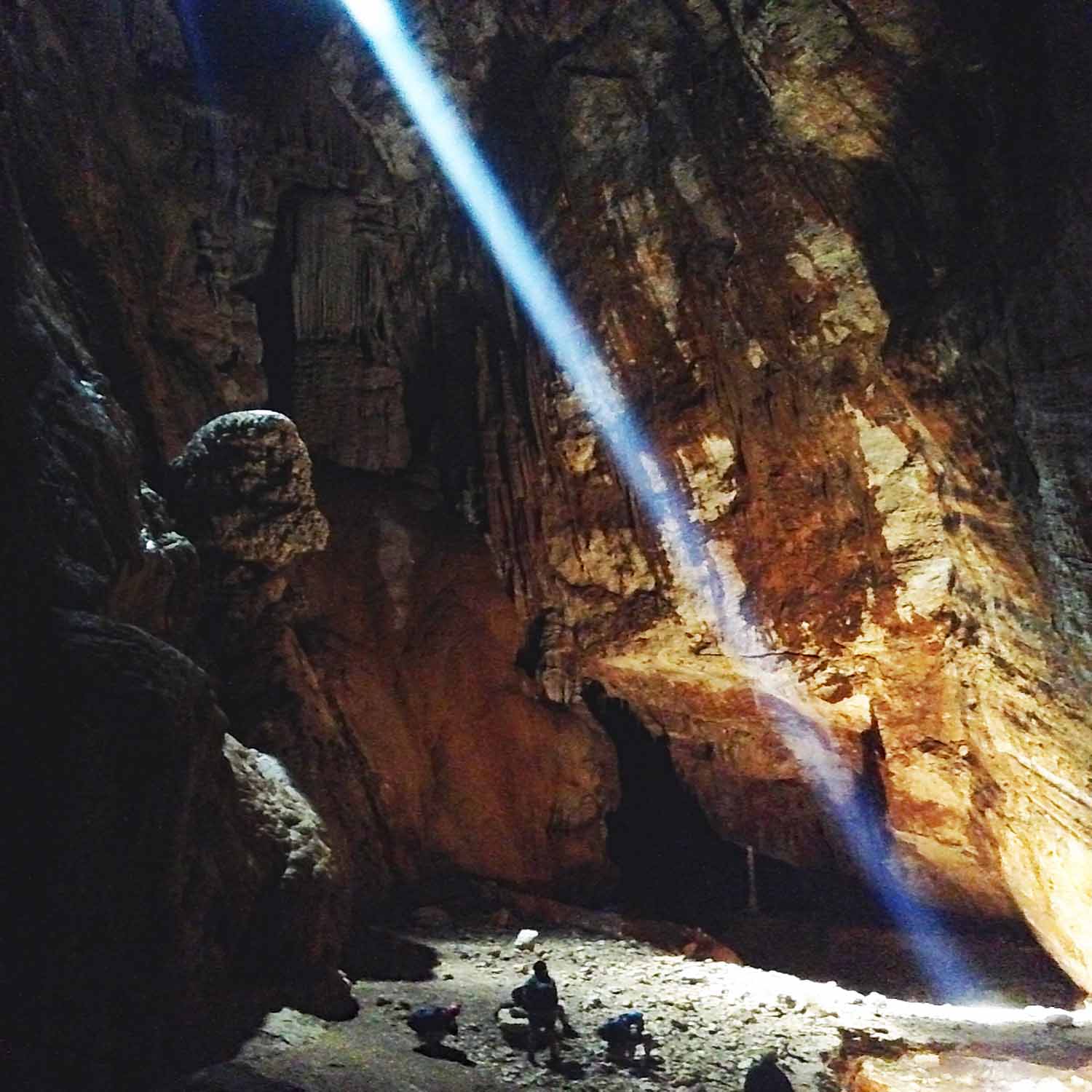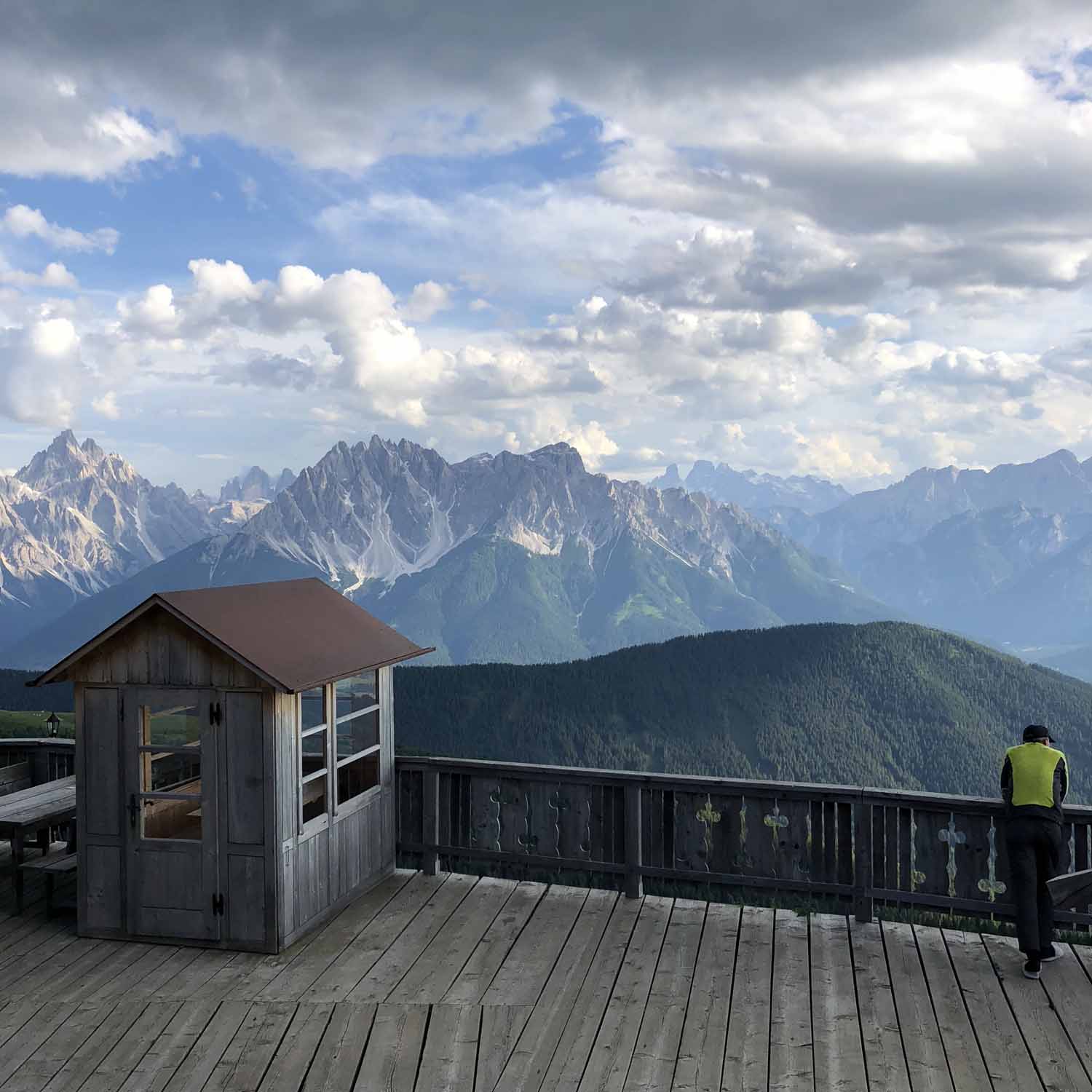Taste Tuscany With Your Feet (Monte Amiata walk/Day 4)
Taste Tuscany With Your Feet
[Day 4]
by Rudston Steward

This is especially the case in my neighborhood in Tuscany, where walking and wine overlap in fertile and fruitful ways. The area traversed by our 5-day Monte Amiata Safari—from the Bagno Vignoni hot springs in the Val d’Orcia, via the volcanic holy mountain of the Etruscans, across a lost corner of the Maremma hills, and finally down to the legendary Brunello vineyards of Montalcino—is a land with deep oenological roots. The Ente and Vivo River valleys around Seggiano are littered with ancient Etruscan wine-making stones probably already in use here over 2,500 years ago: archaic wine-makers pressed the grapes with their feet, collected the juice in basins hollowed out of the soft tufa stone, and then aged, stored and transported the nectar in terracotta amphorae. In more recent terms, the route passes through some of the most prestigious wine denominations in Italy: from the edge of historic Vino Nobile di Montepulciano DOCG in the Val d’Orcia, via the up-and-coming Montecucco Sangiovese DOCG on the flanks of the Monte Amiata, to the all-conquering Brunello di Montalcino DOCG where we finally hang up our boots.
AS IF YOU ARE CARRYING THE LANDSCAPE WITHIN YOU AWHILE
Our wine-odyssey culminates on Day 4 of the trip; the epic last walk starts from the hamlet of Castiglioncello Bandini, with views of the Tyrrhenian Sea near Grosseto and the Tuscan Archipelago beyond, then goes along a ridge dropping steadily into the Orcia Valley below. After crossing the river we head back up the other side of the valley through immaculate Sangiovese vineyards—all the way to Castello di Argiano where we are hosted by our inimitable friends the Sesti family. From their spectacular terrace at Argiano we sit back and retrace the entire route of the trip, like a sinuous line-drawing dancing its way across southern Tuscany. The memories are still fresh: every patch of forest, every lane through an olive grove, each corner of field and slope of vineyard, leaves a specific imprint. It stays with you: it’s as if you are carrying the landscape within you awhile. Over the course of five days’ walking you’ve acquired a kind of telluric knowledge; the Tuscan earth has seeped into your senses.
Then we step into the church for our gala dinner, under cosmic frescoes illuminated by dozens of candles, the evening buoyed by a tide of Sangiovese. The selection of wines culminates in the Sestis’ superlative Brunello di Montalcino Riserva—as elegant and powerful an expression of the local terroir one could hope to imbibe. It’s like sipping the wine-dark stars: a song whispered in the vines, squeezed into a bottle. You recognize its essence on your tongue, know exactly where it comes from—you’ve been tasting and trampling it for days now, sipping and singing it over the hills with your feet.
Where the (Elban) wild things are (Elba walk/Day 5)
Where the (Elban) wild things are
[Day 5]
by Rudston Steward
hen you look at a map of Elba—the shape might be described as a weird wonky fish—it divides into three segments. The eastern third, a fishy tail stretching from Cavo to Capoliveri, historically held most of the islands mines and forges. Elba’s metals have been mined ever since copper extraction began in the third millennium BC; its vast reserves of iron supplied the Roman legions with their superior barbarian-smashing swords.
The relatively flat and fertile middle third of the island, its corpus and fin, is dominated by the capital city of Portoferraio, with its chaotic port and massive defensive walls built by Cosimo de’ Medici after the Florentines booted the Republic of Pisa in the 16th Century.
As for the western third, the funky roundish fish-head: that’s where the wild things are. The Monte Capanne massif rises to over a thousand meters, surrounded by peaks and forested valleys cascading down to the sea. The rugged western coast is dotted with beaches fringed by steep cliffs; a scenic road traces the perimeter in an arc from Patresi to Fetovaia, but there are no roads heading inland, it’s too steep. To venture into the Elban wild you have to walk.
TO VENTURE INTO THE ELBAN WILD YOU HAVE TO WALK
Day 5 of our Elba Safari starts from sea-level in the cove of Sant’Andrea and ascends to the 11th Century church of Madonna del Monte, one of the island’s oldest shrines, likely built on a pagan site. More recently Napoleon worshipped there too, in a manner of speaking, when he holed up with his Polish mistress Marie Walewska in 1814. From Madonnna del Monte the route contours the lower western flanks of Monte Capanne—the domain of wild mouflon sheep, peregrine falcons and whole flowering hillsides of lavender, broom and strawberry trees. At a panoramic spot called Il Troppolo we emerge to a sweeping vista of the Tuscan Archipelago, with the craggy peaks of northern Corsica tantalizingly close, beckoning across the sea.
The last leg of the walk drops into a valley running down to the coast at Pomonte, through aromatic sticky cistus and maquis scrub, towards the cerulean blue strip of the shimmering Mediterranean. Into town onto tarmac, across the perimeter road, straight down to the pebble beach and into the water. Then we swim out to sea to watch the sun setting behind Corsica, buoyed by waves and happiness—that’s how the Elban wild things wrap up a walking trip.
Archipelago Dreaming (Elba walk/Day 3)
Archipelago Dreaming
[Day 3]
by Rudston Steward
have a simple theory about happiness: if you one day happen to walk up a mountain, walk down the other side, and then jump in the sea, it’s pretty much guaranteed to be an amazing—as in very happy—day. I put this theory into practice as often as I can; it’s become something of a dictum I try to live my life by. And try as I may it never seems to fail. Which is why I design walking trips that go over-the-mountain-and-into-the-sea whenever possible. Of course it doesn’t hurt that Italy just happens to have thousands of kilometers of stunning seashore, and is for the most part rather mountainous; this country is blessed with myriad islands and coastlines that effortlessly fuse mountains and sea, with relentlessly spellbinding results. Italy just begs you to walk on by—hiking shoes and costume at the ready—and attain sure-fire strolling enlightenment.
WALK UP A MOUNTAIN, WALK DOWN THE OTHER SIDE, AND THEN JUMP IN THE SEA
In Calabria we walk up and over the foothills of the Aspromonte and then jump into the Ionian Sea; in Sicily’s Aeolian Islands we spend days on end sauntering up and down volcanos and diving into the Tyrrhenian; in Sardinia we traverse the Supramonte massif so as to plunge into the cerulean Gulf of Orosei. But perhaps my favourite setting for putting the theory to the test is Day 3 of our Elba Safari: from the town of Poggio we go all the way up Monte Capanne, then drop down the other side to the coast at Sant’Andrea, and into the delicious delirious deep blue Mediterranean Sea.
From the summit (1019m above sea level) on a clear day the other islands of the Tuscan Archipelago are scattered about and below you in an arc, as in a dream: Giglio, Montecristo, Pianosa, Capraia, Gorgona. To the east stretches the Italian mainland, southern Liguria to northern Lazio. And to the west lies Corsica, so close it seems you could reach over and pick a ripe red corbezzolo from one of its strawberry trees.
ITALY JUST BEGS YOU TO WALK ON BY—HIKING SHOES AND COSTUME AT THE READY—AND ATTAIN SURE-FIRE STROLLING ENLIGHTENMENT
The descent to the sea happens in stages, marked by changes in geology and vegetation, in climate overhead and textures underfoot, in tastes on the tongue and vistas in the mind’s eye. Down over slabs of granite, down past chestnuts in bloom and wild mouflon sheep, through holm oaks and bracken and moss, after bitter beer and sweet pastries in a Marciana bar, down past lentisk and Arbutus Unedo, towards waves crashing onto sand far below, finally down onto the beach and into the blue. Submerged, still walking underwater awhile, swimming. You emerge, dripping in the sun, tired and—as the simple theory goes—happy. Archipelago dreaming.
Sardinia's Grand Canyon (Supramonte walk/Day 3)
Sardinia's Grand Canyon
[Day 3]
by Rudston Steward
any still think of a trip to Sardinia as essentially a beach holiday, often limited to the glitzy north-eastern Costa Smeralda. Given that Sardinia boasts some of the most spectacular beaches on the planet the association is understandable. But to consider only its famed white-sand beaches is to do the island an injustice, for Sardinia is a large, complex, varied and almightily beautiful region. It demands to be explored slowly, and in depth—preferably on foot.
Far from the blingy northern shore, another Sardinia—a land of fascinating cultures, striking geography, dense history, mysterious language, and astonishing arcane traditions still very much alive in the 21st Century—lies inland. One of its strongholds is an area called Barbagia (named thus by the all-conquering Romans, who subdued the entire island in 238 BCE except for this no-fly zone in the mountainous interior, whose people they tried for 600 years, unsuccessfully, to control). And one of Sardinia’s greatest natural treasures is tucked away in Barbagia’s foothills, in a limestone-clad valley near the town of Dorgali: the Gola su Gorropu Gorge—a Sardinian Grand Canyon.
IN MIND-BOGGLING PLACES SUCH AS THESE THE YARDSTICK OF GEOLOGICAL TIME COMES IN HANDY FOR MEASURING THE SCOPE OF A HUMAN LIFE
We explore the canyon on Day 3 of our Supramonte Safari trip (roughly midway through our 5-day hike from the Supramonte mountains near Oliena to the coast at Cala Luna in the Gulf of Orosei). Seeing as there are no hotels close to the gorge we spend the night under canvas, camping on the banks of the Flumineddu River. After a morning dip and a bevy of breakfast espressos it’s a two-hour walk, contouring gently uphill along the riverbank, to the gorge’s entrance. It kinda sneaks up on you: you turn a corner, drop down steeply over a lip between ancient juniper trees, and there it is: the sheer 400-meter vertical face of one of the deepest canyons in Europe.
Gorropu is more about spectacular depth than impressive length (it’s only about 5km long). At its narrowest the two faces are just meters apart, rising like twin geological towers forged in the Palaeozoic Era, with gargantuan white boulders strewn at their base. Looking up at the sky from down here—an insignificant ribbon overhead, apparently on the verge of being crushed between the canyon’s two phalanxes of rock—is a useful exercise and reminder. In mind-boggling places such as these the yardstick of Geological Time comes in handy for measuring the scope of a human life—and grasping its proper, undeniably rather modest, import.
A Calabro-Greek Trance (Aspromonte walk/Day 4)
A Calabro-Greek Trance
[Day 4]
by Rudston Steward
eople have been speaking Greek in Calabria for almost three thousand years, since the first colonies of what would come to be called Magna Graecia were established on its southern shores in the 8th Century BCE. Greek language and culture got a major boost from the 6th Century AD onwards—promoted by the Eastern Roman Emperor in Byzantium, keen to undermine his Latinate rival in Rome against whom he fought interminable wars. The Norman conquest of Reggio Calabria in 1059 finally put an end to Hellenic fortunes, kick-starting the slow decline of Greek civilization, still ongoing a thousand years later. And yet if you know where to look—in small isolated pockets such as the one we hike through over four days on our Aspromonte Safari—a distinct Greek-Calabrian identity is still very much alive and kicking in the region to this day.
Walking into the town of Galliciano on Day 4 of the trip—having crossed the knuckle-white boulders of the Amendolea river and scrambled up the flaxen Aspromonte foothills, their slopes dotted with broom and wild olives—is like landing out-of-the-blue on a parched Aegean hillside. The road signs are in Greek; kids shriek and tease each other in Greek; the church is Greek Orthodox; even the flags are Greek. The trattoria where we have lunch is a Greek taverna in disguise, complete with accordion-brandishing waiters and Calabro-Greek dances.
ON THE ROAD, ON FOOT, IN AN OVERLOOKED VILLAGE HANGING OFF A REMOTE MOUNTAINSIDE IN CALABRIA, THE SIGNAL COMES THROUGH CLEAR AS A SIREN’S SONG
I can never tell whether it’s because of the post-prandial pirouetting, the Greek Orthodox chanting wafting over from the church, or perhaps just the taverna’s pungent red wine, but our afternoon’s hike back to Amendolea inevitably feels like walking in a Calabro-Greek trance. Rather than retrace our steps we drop down steeply to the fiumara riverbed and then boulder-hop downstream. It’s an elemental landscape of stark contrasts: a wide white expanse of boulders, framed by pewter-dark hills, parched and brooding, under an impeccable cerulean sky. A glistening streak surges among the boulders: the river etching its jagged line into the bleached valley. We pass through a vale of oleanders, the crimson flowers gleaming like gaudy nuggets in a ghostly seam of white bedrock. Further on a cow sits in the sand, turning its head slowly as we trudge past, unflappable as a Stoic philosopher. When we finally step onto the shady terrace back at Ugo’s agriturismo in Amendolea it’s like coming down to earth, returning to Italy from some sort of otherworldly journey.
Sometimes travel opens up a window through which stories jettisoned in time come streaming back into the present. After all, places are composite, mysterious things: they contain myriad echoes, multitudinous histories, the murmur of untold peoples past, the shiver of spent dreams still trembling underfoot. It can be difficult to perceive—this murmur of ancient tongues, the whispered substratum of cultures upon which we daily tread—as we go about our busy modern lives at home. But on the road, on foot, in an overlooked village hanging off a remote mountainside in Calabria, the signal comes through clear as a siren’s song: and so you walk on, ears-opening, white-boulder-hopping, under a burnished Byzantine-blue sky—in a Calabro-Greek trance.
Wake up and walk on: a Dolomitic dream (Dolomites walk/Day 3)
Wake Up and Walk On: a Dolomitic Dream
[Day 3]
by Rudston Steward
’m fine with getting up at 4:30am—as long as it’s for a compelling enough reason. It’s a short list: in the African bush, to look for leopards; in the tropics, to hear the dawn chorus of birdsong in the rainforest; and in the mountains, to see the sunrise from a summit.
I’d set out in the half-light from the Bonnerhuette refuge, where we spend the second night of our Dolomites Safari, at precisely 4:48am. My headlamp guided me along the first steep steps, cold air stinging my nostrils; breathing felt a bit like snorting frost or inhaling tiny icicles in the dark. The path contoured around the hill before zigzagging sharply up towards a spur; beyond that the pale crown of Mount Pfannhorn rose dawn-muddled and somber, peering down at me impassively. A stone-clad sentry, unfazed by the trifling incursion I was mounting at its base.
A BIT LIKE SNORTING FROST OR INHALING TINY ICICLES IN THE DARK
As I climbed the light swelled, a gradual suffusion, so that it seemed I was walking the very day into being. It first illuminated the peaks of the Dolomiti di Sesta far behind to the west, then broadened into a glowing swathe. Emanating, apparently, from the stone on high and radiating towards the forests below. I reached the summit at 5:22am, itself still in shadow, a towering vantage point from which to observe the limpid dawn seeping steadily into the valley. When the first dazzling ray of sunlight broke, a golden shaft of luminescence, the landscape instantly danced to a different tune. As if someone had flipped a chromatic switch in the sky, tuning the world to a higher frequency.
The mountains were now laid out before and below me, a monumental cordon of fissured and filigreed rose-tinted rock, stretching as far as the eye could see. The furthest ranges glowed pale mauve, seeming insubstantial, ethereal. Standing alone on this apex of the world—needled by cold, elated, completely in awe—it occurred to me I might get up at 4:30am more often. Find more leopards. And rainforest birdsong. More sunrises from many more summits.
SOMEONE HAD FLIPPED A CHROMATIC SWITCH IN THE SKY, TUNING THE WORLD TO A HIGHER FREQUENCY
I don’t usually indulge the wishful thinking that seeks to anthropomorphize nature. But if those mountains could deign to speak—a communiqué bathed in impossibly ethereal light—they’d probably say: Wake up! Don’t waste a sunrise. Wake up and walk on.
I floated through the rest of the morning as if in a Dolomitic dream. Back to the refuge for breakfast. And later: a 13km afternoon hike, 900 meters of ascent, through what I consider to be some of the most spectacular mountain scenery in the world. That evening we arrived at Locatelli refuge, a bigger beast and more crowded than the intimate Bonnerhuette of the night before. But with a killer sunset view of the Tre Cime di Lavaredo to compensate. Sunrise to sunset: when you’re walking in the Dolomites it’s sometimes hard to tell where the dreaming ends or the waking begins.
For Whom the Goat Bell Tolls (Aspromonte walk/Day 3)
For Whom the Goat Bell Tolls
[Day 3]
by Rudston Steward
alabrians have about as many words for goat as the Inuit—according to that popular urban legend, whose veracity I have not yet had the opportunity to ascertain in person, on Baffin Island, say, or in northern Siberia—have for snow. There’s a poster in the museum in Bova, the capital of Calabria’s Aspromonte Grecanica region, listing dozens of goaty Greco-Calabrian terms, and to my untrained ear they sound like invocations: O tragopuddho (a young billy goat); to rifi ozzopodi (a young goat that gets separated from the flock); asti tripimeno (a goat with a hole in its ear). A goat bell can be either a cambana, cuduni, cudhuneddho or cudunaci; not to be confused with enan ximerinaci (a bell worn by a small goat) or, god forbid, enan mpecurinaci—a bell worn by a lamb.
There are parts of Calabria that feel as far removed from the hugger-mugger of modern life as an Arctic ice floe. On Day 3 of our Aspromonte Safari we walk from the town of Bova, up on its hill, to the hamlet of Amendolea, a cluster of houses strung out along its eponymous river (called a fiumara) far below. The fiumara is a broad boulevard of bone-white boulders, curling and cornering from the high Aspromonte mountains all the way to the Ionian Sea. For most of the year it runs almost dry, but occasionally swells with winter flooding, frothing riverine thunder as the boulders rumble and roil downstream.
THERE ARE PARTS OF CALABRIA THAT FEEL AS FAR REMOVED FROM THE HUGGER-MUGGER OF MODERN LIFE AS AN ARCTIC ICE FLOE
We never see people on the walk to Amendolea, but there are goats aplenty, an occasional raptor, and sometimes cows. Once we came across a dead sheep strung up in a tree by a local farmer, apparently to keep it from the wolves. Halfway down the hill we stop for lunch at an abandoned monastery, where the goats inevitably try to hustle a share of our panini. So I come prepared to defend our picnic with impassioned Greco-Calabrian invocations—having memorized a few key phrases in the museum. Needless to say, in the manner of unflappable Calabrian goats, they ignore this wannabe goatherd completely.
In Amendolea we stay at Ugo’s Agriturismo, lording it from his shady terrace over the lush citrus groves laid out along the fiumara below. Ugo is a master-craftsman, the bergamot-whisperer: bergamot is the most valuable and sought-after citrus in the world, and grows only along this narrow coastal strip of southern Calabria and bits of Sicily across the strait. Its essential oil is a key secret ingredient in perfumes and fragrances, which means that major global perfume houses often come a knockin’ at Ugo’s door. To gain access they must first pass muster with Pasqualino—Ugo’s formidable donkey. And he can be very picky.
Before settling down to the leisurely Calabrian feast Ugo lays out on the terrace for our dinner, we first work up a commensurate appetite by climbing the hill behind town, up to the ruins of Amendolea’s castle. Built in the 11th Century to defend the border between the territories of Reggio Calabria and Locri, the castle was abandoned after the devastating earthquake of 1783. The surrounding hamlet, on a plateau below the ramparts, was inhabited right up until the catastrophic floods of 1953.
ONE IS FOREVER SUSPENDED BETWEEN BEAUTY AND RUINS, MYSTERY AND DECAY, WHILE LIFE FLOWS ON UNFLAPPABLE AS A FIUMARA
Today the ruins are the domain of goats and occasional madcap travellers who’ve somehow stumbled upon this fascinating forgotten corner of Italy. The tinkle of cambanas and cudhuneddhos provides a bucolic soundtrack as the sun sets behind the Aspromonte foothills sloping away towards the Ionian coast. The impassive goats don’t seem at all troubled by the stunning views as they graze between collapsed walls and cracked facades. In bergamot-infused southern Calabria one is forever suspended between beauty and ruins, mystery and decay, while life flows on unflappable as a fiumara.
Sardinia Unearthed (Supramonte walk/Day 2)
Sardinia Unearthed
[Day 2]
by Rudston Steward
ardinia is a land of secrets: things are kept hidden here, below the surface, behind cold stares and warm smiles. Its history is enigmatic—the quasi-mythological Nuraghic civilization scattered an impressive series of stone towers about the island in the second millennium BCE, but left behind far more questions than answers. Its language is a riddle, an archaic blend of Latin, Catalan and Punic, as if designed to confound foreigners and foil eavesdroppers. Its landscape is deceptive, the glossy beaches of the glamorous northern coast concealing a vast mountainous and rugged interior. Its people can be prickly and stern, suspicious of outsiders, but also exuberantly jovial and fiercely loyal once you’ve gained their trust. Its rural society is still to a large extent governed by obscure codes of honour, unspoken traditions that bind.
In Sardinia, if you are to understand anything at all, you therefore have to search: decipher the codes, unmask the stares and smiles, listen to the strange songs, even sing them. Unearth the secrets stored in Sardinia’s landscapes—and the best way to do so, in my opinion, is to walk.
YOU THEREFORE HAVE TO SEARCH: DECIPHER THE CODES, UNMASK THE STARES AND SMILES, LISTEN TO THE STRANGE SONGS, EVEN SING THEM
Our Supramonte Safari trip starts in the mountains of the Barbagia region, near the town of Oliena in Nuoro province, and walks over four days to the coast at Cala Luna beach in the Gulf of Orosei. We are confronted with fascinating Sardinian oddities at every turn: weird polyphonic songs, wooden “su pinnetta” shepherds’ huts, wacky recipes for boiled sheep and myrtle decoctions, wicked bandits with woven baskets, and the spectacularly winding Gorropu Gorge.
The first day’s walk, from Su Gologone to the Flumineddu River, hides secrets of a different—geological—order. We climb a limestone escarpment, through dense maquis of holm oak, strawberry tree and lentisk, to the Nuraghic site of Tiscali: a deep cave-like depression invisible from below, home to a 15th century BCE Bronze Age settlement, and inhabited until as recently as the Middle Ages. Later, in the Lanaitto valley, we go deep underground, into the bowels of the Sardinian earth: a series of caverns, culminating in a gargantuan chamber of soaring stalagmites and dripping stalactites. If the timing is just right a singular ray of sunlight will shine through the hole at the top, illuminating the floor far below, casting its glow like a telluric spotlight.
CASTING ITS GLOW LIKE A TELLURIC SPOTLIGHT
There are no hotels on the Flumineddu River, so we camp on its banks for the night. For dinner we are hosted in a local shepherd’s hut by my friend Angelo. He wears a blue shirt, black beret, enigmatic smile, and never stops pouring wine from his bottomless flagon. Filling every glass right to the brim: “O bevete, bevete!” Drink up. He also never bothers to answer my question about his recipe—so one of the supreme Sardinian secrets still remains unanswered: how the hell can a boiled sheep taste so damn good?
Into the Pale Mountains (Dolomites walk/Day 2)
Into the Pale Mountains
[Day 2]
by Rudston Steward
e had driven all the way up the spine of Italy, north from Tuscany past Bologna, Bolzano and Brunico, and then along the Val Casies right to the Austrian border. It’s a dead-end valley that comes to a head at the hamlet of Santa Maddalena, where we spent the night; from there you either turn around and drive back the way you came, or ditch your car—and walk up the mountain, into the clouds.
When you spend a lot of time walking up and down mountains you learn that they have distinct characters, akin to personalities: each is a unique expression of geology and geography, a singular set of mineral circumstances evolved over time. Mountains come in different flavours: the particular way air fills your nostrils or tastes on your tongue, the specific sound of footfall over leaves or scree, the quality of light on this summit or that saddle or slope.
The major mountain ranges—the world’s great amphitheaters of stone—are wildly diverse stages upon which very different geological dramas play out. I’ve been lucky enough to hike in the Andes, Himalayas, Alps, Pyrenees, Appalachians, Drakensberg, and Apennines; each setting is distinct. At the same time a single thread unifies the experience of walking in mountains across five continents: the scale of all these ranges lays bare human insignificance. In the mountains you are not in charge—you surrender to forces far greater than yourself. Mountains confront you with the silence of ancient rock. They force you at every step to size up the brief flicker of a human lifespan against the enigmas of deep time.
OR DITCH YOUR CAR—AND WALK UP THE MOUNTAIN, INTO THE CLOUDS
After we set off from Santa Maddalena the morning’s walk was basically uphill all the way, at first through dense pine forests, later above the tree-line over grassy hillsides patchy with multi-coloured lichen. As we reached the saddle at Kalksteinjochl my phone beeped “Welcome to Italy,” which was weird given that we’d been in Italy all morning. We took a rest; a few minutes later my phone beeped “Welcome to Austria.” Which was weird, as I hadn’t moved an inch since being welcomed to Italy moments earlier.
From the saddle we contoured along a series of ridges, dipping and rising all afternoon but essentially maintaining the altitude we’d gained on the morning’s ascent. The sun was brilliant, its heat diluted by the thin, crisp air, bright as a bugle blast. The sky was Tiepolo-blue and immaculate. We walked through Alpine meadows laid out as if by design: a valley of rhododendrons, glistening fuschia; a hillside of blue and then yellow gentians, the latter used locally for grappa; a field of orchids, like small scattered flares; delicate brunellas lining the path with their chocolate scent; a cluster of campanella pelosa, aptly hairy.
We traversed a pocket of snow, a glaring white island stranded in the ocean of green meadows. The temptation to strip down to the waist, plunge into the powder and make summery snow-angels proved irresistible—a DIY spa treatment at 2500m above sea level. A bit further on we skirted a pond, its surface reflecting a jagged line of Dolomitic peaks to the south, pewter-grey on the horizon under a compact mass of ivory clouds. The pool was perfectly still, the air breathless; the reflected clouds seemed to dip below the surface of the water, probing its depths.
Later we crept along a narrow footpath of shale and pebbles, carved out of rock and dropping away so steeply we seemed to be walking on air. As if we were floating up and away, into a giddy Dolomitic realm—completely immune to nation states and gravity. Up here we were free of constraints, beyond the reach of borders and maps. Italy and Austria were irrelevant; the only proclamation that made any sense anymore was “Welcome to the Dolomites.”
COMPLETELY IMMUNE TO NATION STATES AND GRAVITY
A final surge up the flank of Mount Pfannhorn brought us round a corner to a viewpoint: the entire Dolomiti di Sesta range was revealed, lined up before us like a massive cordon of spiky sentries. Pale and formidable. Their peaks were almost milky in colour, as if the upper reaches were fusing with the sky. They got progressively darker lower down towards the ground, to their graphite-grey bases: clutching at the earth, anchored in substrata of rock.
We stood there in silence a while, taking in the view. It felt like we had stumbled into another—archaic—planet. Walked our way into some parallel mountain reality. It dawned on me that we humans have no starring role to play in this theater of geology and stone: we are not needed up here. Then we kept walking, tired and exhilarated, to our refuge below—walking into the view, disappearing into the pale mountains.
The Mountain In-between (Monte Amiata walk/Day 2)
The Mountain In-between
[Day 2]
by Rudston Steward
hen you walk to the top of the Monte Amiata there are no proper paths through the beech woods, you take a bearing and navigate by compass. One compass is not enough; there’s so much metal underground that the needle gets drawn off course in places. I bring a second compass—to keep tabs on the first, check for deviance, autocorrect. So maybe it boils down to this basic geological fact—magnetism. The mountain draws us nearer, irresistibly.
Or perhaps the underlying cause is geographical, totemic: the volcanic cone of the Amiata rises from the plains of southern Tuscany like an igneous altarpiece, drawing the eye up to the heavens. Those of us that live around here can’t help but gaze upon its slopes with reverence and restlessness—the way baby swallows size up the sky from their nests just before launching into first flight.
Or maybe it’s the fact that the Monte Amiata has always been liminal terrain, an in-between place. Between Tuscany and Lazio; between the Republic of Siena to the north and the Papal States to the south; between the Appenines to the east and the Tyrrhenian Sea to the west; between the city-states of Etruria and the expanding Roman Empire; between the Val d’Orcia and the Maremma; between earth and sky.
In-between places are often magical; liminal space is fertile ground. Interesting things happen on the periphery, across borders, beyond the threshold, on the edge—where the neat boundaries that delimit experience fade and merge. Beyond the sway of business-as-usual, where rules and habits and prejudices release their clear-cut grip on our daily lives.
Whatever the reason, the Monte Amiata lodges itself firmly in your imagination, deeply under your skin. Around here you are constantly aware of its hulking presence—a subconscious geological hum that slowly but steadily insinuates itself into the core of your being. The mountain’s telluric pulse keeps snagging your peripheral vision, embedding itself on your horizon.
A SUBCONSCIOUS GEOLOGICAL HUM THAT SLOWLY BUT STEADILY INSINUATES ITSELF INTO THE CORE OF YOUR BEING
The Monte Amiata Safari pays homage to the mountain: a 5-day hike around its base, over its ridges, along its valleys and streams, traversing its flanks. As you walk you are constantly aware, day by day, of the volcanic peak—our point of reference, measuring stick, gauge of distance. The mountain is a cosmic lightning rod granting us safe passage as we complete our Monte Amiata pilgrimage on foot.
Day 2 of the walk follows a symbolic trajectory: from Bagno Vignoni we turn our backs on the Val d’Orcia and head in the opposite direction, up and away through forests and fields. Into the bosom of the mountain near Seggiano.
To be sure, first we take a good long soak in the thermal hot springs—no better way to kickstart a walking trip in Tuscany than floating awhile in the region’s abundant curative waters. Bagno Vignoni is a rite of passage: untold hordes of Etruscans and Romans and Lombards and Franks, great unwashed masses of medieval pilgrims on the Via Francigena, assorted megalomaniac Medici princes in the Renaissance, the venerable Saint Catherine of Siena and not-so-pious Pope Pius Piccolomini, the glitterati of the 18th Century Grand European Tour; all paid their sulphurous dues here before continuing on their merry way.
In trademark Maremma Safari Club fashion, from overcrowded Bagno Vignoni we do an about turn and head off into the hills, along a path that no-one else seems to know about or ever follow. The great green mass of the Amiata, its sinuous volcanic silhouette, starts off a distant line drawing, an arabesque hovering above Castiglione d’Orcia. Over the course of the day’s 20km walk it gets progressively closer, flatter, fatter, greener, meaner, leaner—constantly fading in and out of view, appearing and disappearing behind clay hillocks, over rises and under clouds, between stands of chestnuts and pine and oak.
At the end of the day you crest a rise and the view opens up abruptly. As if the Amiata has somehow crept up on you from behind Poggioferro, shrouded in an ethereal late-afternoon glow. The slopes tower in steep diagonals, a soaring superstructure, its valleys crumpling and folding uphill—acutely foreshortened and impressive.
You can no longer see the Monte Amiata, for you have walked your way right into it. Here you are not on the mountain, but of it.

